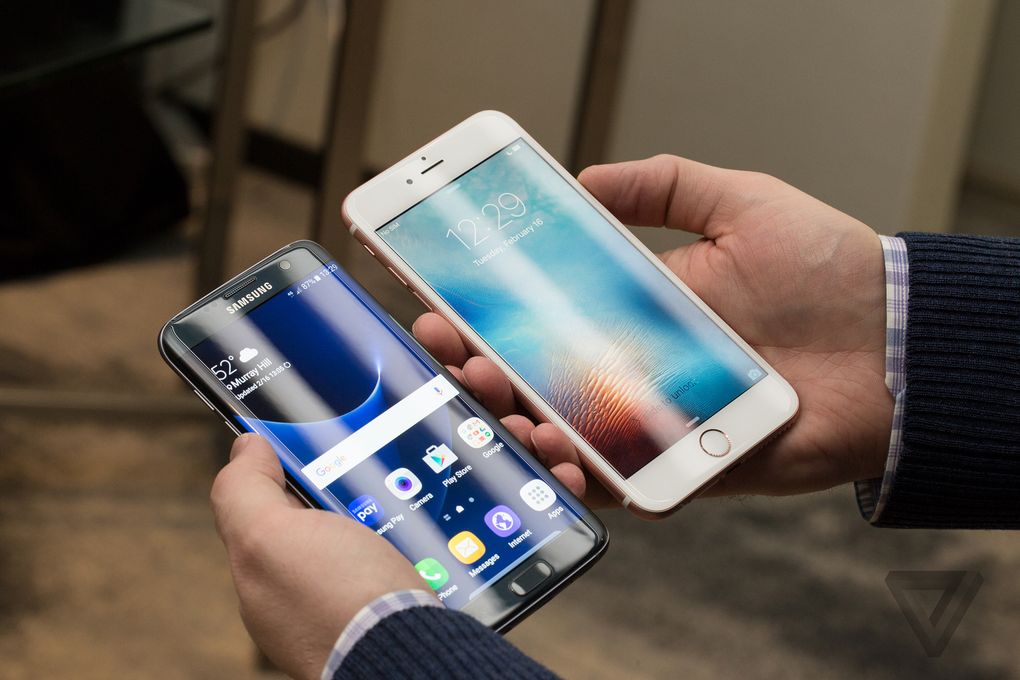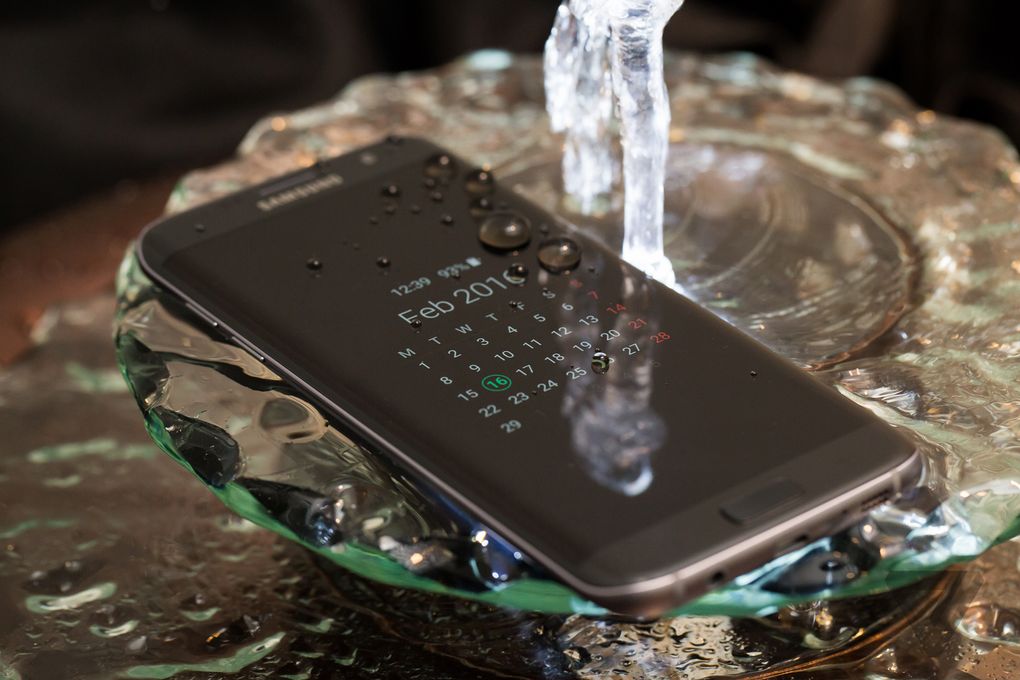After months of speculations, rumors and leaks, the Galaxy S7 and S7 Edge have finally been revealed at the MWC 2016 in Barcelona.
For those who were hoping for a complete redesign, there’s not much to be happy about as the Galaxy S7 looks a lot like its
predecessor, the galaxy S6. Not so similar that you mistake one for the other as Samsung has done a good job of
making minor tweaks while sticking with the same design language this year.
The device is comprised of an all aluminum frame with front and black glass panels, which gives it a real premium feel.
As reported in our previous posts, Samsung decided to add a slight curve to both the left and right edges on the back of
the phone, similar to what was seen on last year’s Note 5.

On the back we get to see a camera module in the centre which is very similar to the one found on the S6. The sensor is almost completely flush and the camera bump seems less prominent compared to its predecessor. Overall, the back panel seems sleek and has a very minimalistic look.
Heading over to the front of the device, its clear that Samsung decided not to take any chances with experimentation as the S7 looks similar to
most other Samsung devices, largely due to the presence of the physical home button sitting under the display. On the two sides of the home button are the traditional capacitive recent applications and back buttons, which have become a hallmark of the company. The Samsung logo sits above the display, above which sits an earpiece and a front-facing camera to the right.
Moving to the sides, not much has changed as the power button sits on the right side and the left side houses the volume rockers. The top is mostly bare with the 3.5mm headphone jack, Micro-USB port (Yes you read it right, Micro-USB), and a single speaker grill housed at the bottom edge. It’s quite surprising that Samsung decided to forego a USB Type-C port on its flagship for 2016 as it is already clear that Type-C will be a standard for all Android devices from here on. Looks like Samsung is waiting for more widespread adoption of the standard before it starts putting it on its phones.
Though the Type-C port is missing, Samsung has decided to bring back the two most sought after features to its Galaxy S line this
year. First being the water and dust resistance. The S7 and also the S7 Edge come with IP68 rating, meaning they can survive
splashes of water and a few tumbles without being rendered useless. The second biggest feature is expandable storage with
Samsung deciding to bring back the microSD card slot which lets you expand storage up to 200 GB.
The device features the company’s signature Super AMOLED display, sporting a 5.1-in QHD display which is unsurprising. An addition to the S7 is its always-on display. Samsung is finally catching up with other companies like Google and Motorola who have already featured it on their handsets. Since its an AMOLED panel, battery life will not take a serious hit.

The Galaxy S7 will be powered by either the Exynos or Qualcomm’s Snapdragon processor with 4GB RAM. Official word from Samsung regarding which processor the device will ship with is not out. Compared to the S6’s 16MP sensor and f/1.9 aperture lens, the S7 comes with a 12MP rear camera with an f/1.7 aperture and also larger 1.4 micron pixels, which should allow to take in much more light.
The device is running a lightly customized Android Marshmallow 6.0 with Samsung’s Touchwiz overlay on top, which seems to be toned down and similar to the S6 and Note 5’s software.
We sure are excited about Samsung’s latest offering. Do let us know what you think in the comments section below!


What might be the expected cost of the phone?
Its almost 700$ so calculate that in Indian currency now 😛